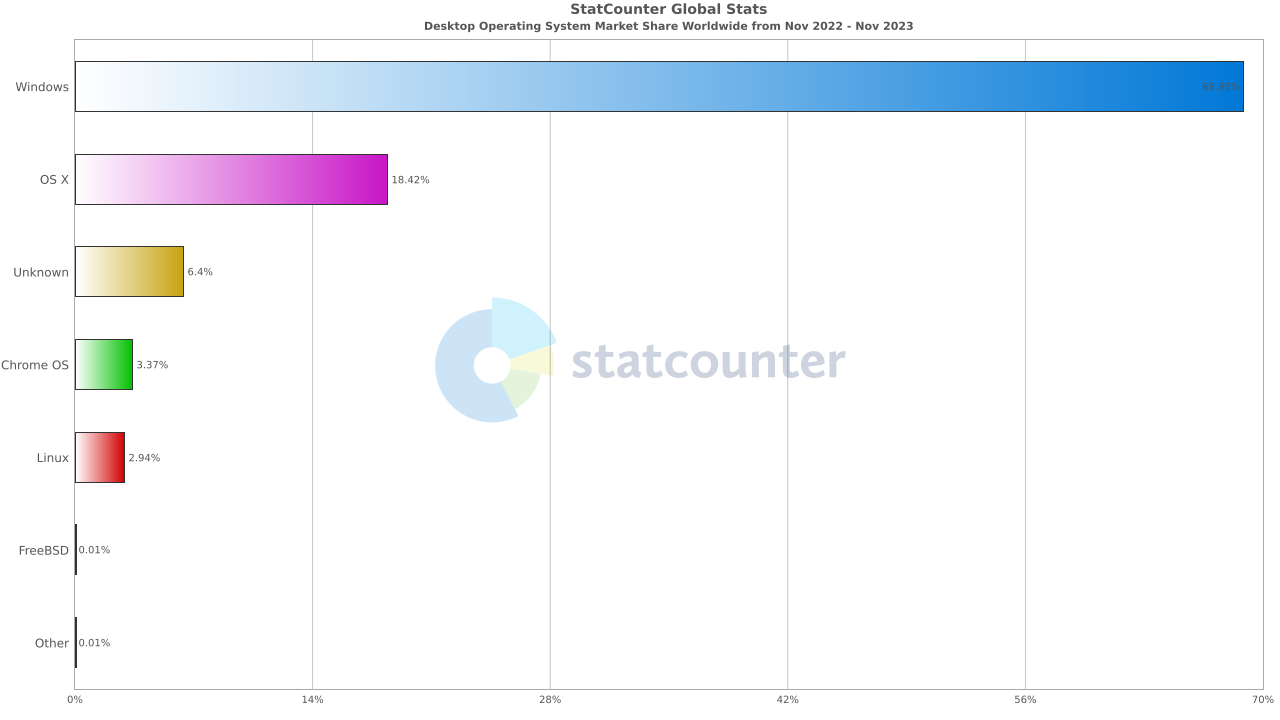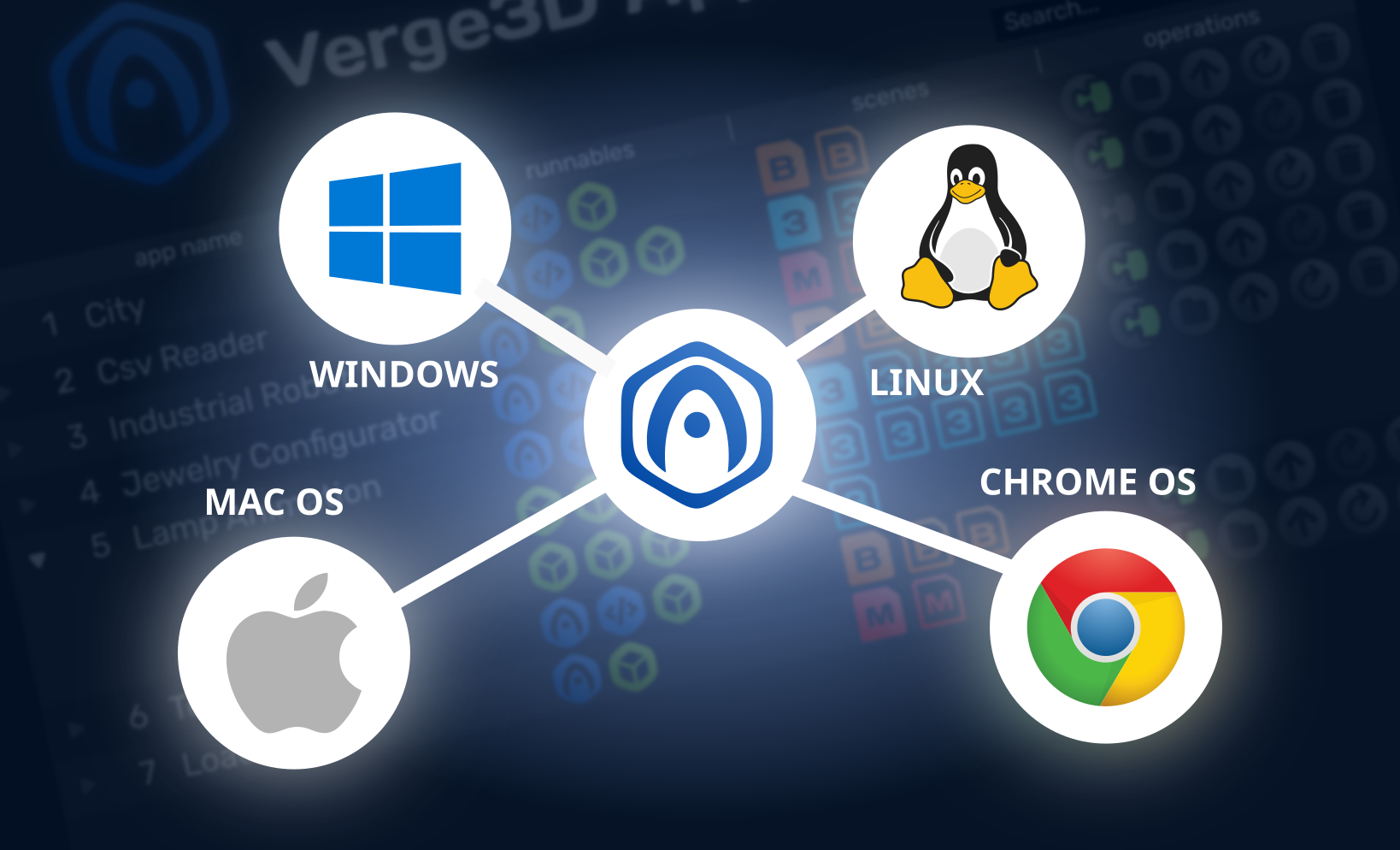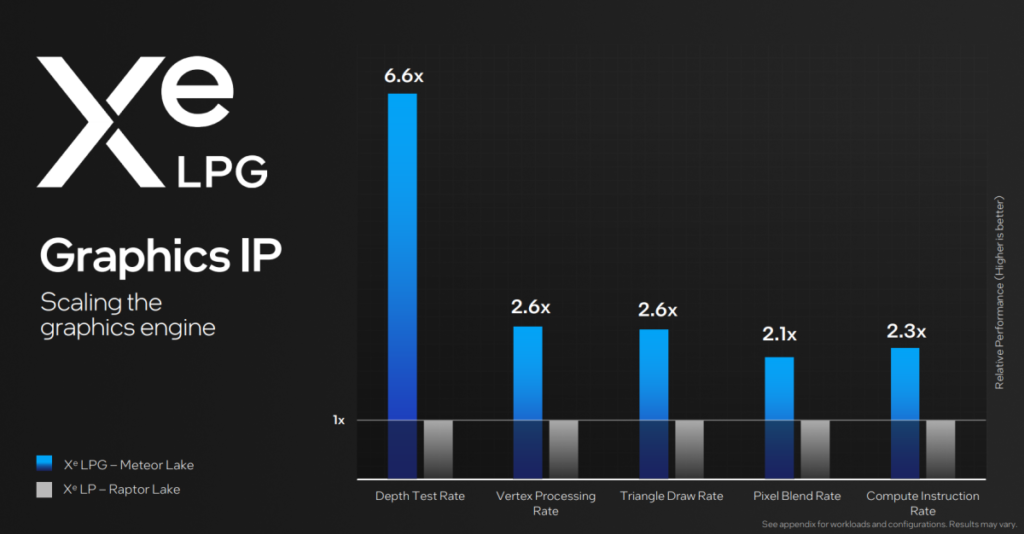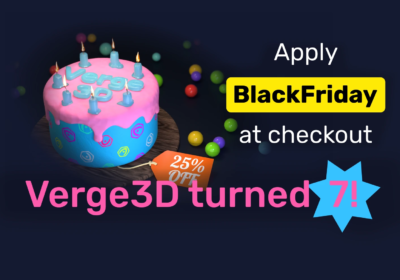From day one Verge3D has been a cross-platform 3D web toolkit which worked well on Windows, macOS, and Linux operating systems. Now it’s time to add a new system to this list—ChromeOS!
Why ChromeOS?
Let’s take a look at the stats from StatCounter. Here is the market share data for desktop operating systems over 2023.

During this time ChromeOS got a major increase in its installation base, from 2.48% to 3.71%, and eventually became the third most-used desktop operating system as of today. ChromeOS is extensively used in education, as a household’s second system purchased specifically for kids, and as an easily maintainable system for organizations and companies.
Such the unusual grow of ChromeOS popularity corresponds to an increased demand for Chromebook devices, which offer decent performance and security, being affordable at the same time. But most importantly, its success is the success of the web platform as a whole, which is now more feature-rich, evolved and robust than ever before.
Verge3D Embraces ChromeOS
Of course we at Soft8Soft keep our finger on the pulse of this modern trend. From now on, we’ll be supporting ChromeOS as the fourth operating system at the same level as we do for Windows, macOS, and Linux. In fact, the latest Verge3D 4.5.1 for Blender works on ChromeOS quite well already! As such, we have updated our website to mention ChromeOS as supported, and added the ChromeOS installation guide to the Verge3D User Manual.

Roadmap for 2024
In the near future, we’re going to pay more attention to progressive web applications (PWA) and supporting corresponding APIs in Verge3D. This functionality is crucial both to ChromeOS users and the users of other operating systems. With our recent App Manager upgrade which introduced important customization features, this goal would be even easier to achieve.
Another major field or our interest would be optimization and GPU benchmarking. Typical WebGL applications are quite heavy in terms of memory consumption and GPU usage. However, most Chromebooks rarely have plenty of those, being middle-end devices with integrated Intel graphics units. Thankfully, with the introduction of Alder Lake and (just recently) Meteor Lake CPUs, Chromebooks showed a great boost in their graphics performance, which in most cases sufficient for rendering 3D web experiences at max speed, and even for running quite resource-thirsty games!

If you are a ChromeOS user, feel free to test out the latest Verge3D release on your device! Let us know how it works for you on the forums.




We have some updates already. Check out Verge3D 4.6 preview with initial support for PWA apps.